What is Australia’s Special Operations
Command?
The special forces of the Australian Defence Force are units of Special Operations Command and associated units of the Royal Australian Navy and the Royal Australian Air Force that conduct and or support special operations to advance and protect the national security of the Commonwealth of Australia.
The special forces of Australia have a lineage to a variety of units raised in the Second World War, such as the Independent and Commando Companies, Z Special Unit, Navy Beach Commandos, and Coastwatchers.

Special Operations Command (SOCOMD or commandos) was established on 5th May 2003 to unite all of the Australian Army’s special forces units. It is modelled on the equivalent commands in the United States and British military forces and is led by a major general as Special Operations Commander Australia.
Specifically, SOCOMD was formed in order to enhance Australia’s ability to use non-conventional war-fighting means to respond to the asymmetric threat of terrorism.
Due to their specialist skills and training, special forces soldiers are often at the front line as they conduct and or support special operations in places such as East Timor, Iraq and Afghanistan.
The job they perform is dangerous and often confronting, which is why they are 50% more likely to suffer a casualty.
The tragic events they invariably face can lead to a lifetime of financial and emotional hardship for serving soldiers, veterans and family members.
Given the many unseen challenges they endure, the Commando Welfare Trust was founded to give these Australians emergency funding and long-term financial support where the system cannot.
Learn more about the SOCOMD units the Commando Welfare Trust supports below.
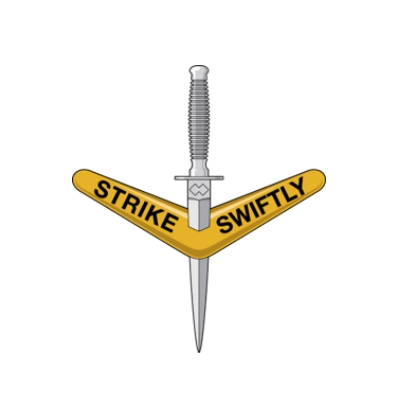
1st Commando Regiment
The 1st Commando Regiment is truly unique within Army. As the oldest unit within Special Operations Command, the Regiment has provided an unbroken conduit for the passage of experience from WWII Commando forefathers to the modern Australian special operations community.
Today, the 1st Commando Regiment contains some of the most skilled, dedicated, and combat-experienced soldiers in the Army.
Over the past decade, combat operations and the evolution of the commando trade model have changed the character of the 1st Commando Regiment. Due to this, the Regiment has grown from a unit with a limited operational utility to one built on a core of highly skilled individuals able to integrate into regular army special operations with little notice.
As a result, the Regiment is being increasingly relied upon to supplement the efforts of regular Army special forces counterparts on both operations and in training.
The Regiment is an integrated unit comprising a high number of regular (full-time) soldiers, ex-regular and reserve (part-time) soldiers, who are all required to meet the same rigorous standards of a regular commando.
The provision of high-quality, competent and current individual Commandos to round out and reinforce the 2nd Commando Regiment is the main focus for the Regiment, with much of its effort and resources dedicated to this task.
Raised in 1955, the Regiment has grown from two independent commando companies in Sydney and Melbourne to a commando signals squadron and finally a regimental headquarters in 1981.
In recent years the Regiment has become more frequently deployed on operations providing small detachments and individuals to Bougainville, East Timor, the Solomon Islands, and Iraq, and company-sized combat elements to Afghanistan.
The Sherwood Green Commando beret is worn as the primary form of headdress, a formally recognising Commando qualification. The Sherwood Green beret was adopted due to its close association with the British Army and Marine Commandos of WWII.
The regimental badge features a silver WWII-era Australian fighting knife surmounted by a gold boomerang bearing the regimental motto Strike Swiftly.
2nd Commando Regiment
The 2nd Commando Regiment is an Australian Army Special Forces unit, forming one of three combat-capable units within the Australian Special Operations Command. The regiment was established on 19th June 2009 when it was raised from the 4th Battalion, The Royal Australian Regiment.
The Regiment’s history stems from the decision in 1996 to convert 4 RAR, a light infantry battalion, into a Commando Regiment. On 1st February 1997, 4 RAR was renamed and re-roled as 4 RAR and commenced the development of Australia’s first regular Commando capability.
This development was conducted through a period of continuous operational taskings with collective deployments to the Solomon Islands, East Timor, Iraq and Afghanistan. Throughout these operations, the Regiment served with distinction, notably receiving the Unit Citation for Gallantry for its service as a part of the Special Operations Task Group in 2005-2006.
The Regiment’s new badge was created to reflect the history and traditions of Australian Commandos and the offensive nature of the unit. The central feature of the badge is a silver Fairbairn-Sykes fighting knife, universally recognised as the symbol of a Special Forces unit, and is backed by the blackened double diamonds, representative of the felt colour patches worn on Australian Commando uniforms of WWII.
The Regiment’s motto is included in a gold scroll, Foras Admonitio, a Latin phrase translating to “Without Warning”. The motto highlights not only the challenges of modern warfare, but the modus operandi of the Regiment.
The Regiment lost more soldiers while deployed in Afghanistan than any other unit of the Australian Defence Force. The Regiment is also actively supporting the recovery of a significant number of soldiers who have been seriously wounded in battle or injured on operations and in training.
Some of these soldiers will never return to full duty as Commandos. Support for the families of the fallen and wounded and their families is a priority of the Regiment.
For the 2nd Commando Regiment, the Commando Welfare Trust is a key enabler in ensuring the continued support of members and their families. On joining the 2nd Commando Regiment, a soldier and his family become Commandos for life.
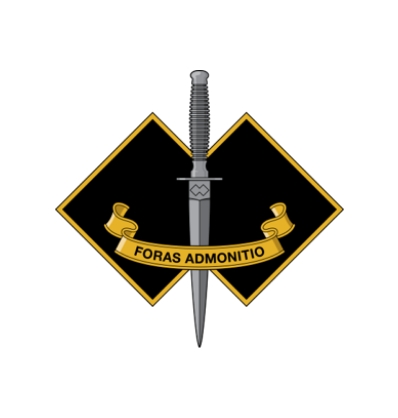
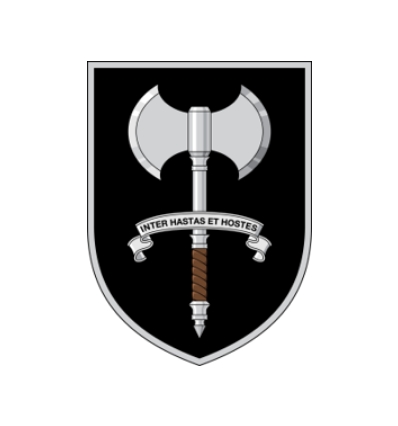
Special Operations Engineer Regiment
The Special Operations Engineer Regiment, formerly known as the Incident Response Regiment, provides mobility, counter mobility and specialist technical counter chemical, biological, radiological, nuclear and explosive (C-CBRNE) capabilities in support and as part of the Special Operations Command.
The unit originated in 1999 as a CBR, Explosive Ordnance Disposal and Search response organisation (Joint Incident Response Unit), constituting part of the wider Australian Defence Force support to the Sydney 2000 Olympic Games.
The unit evolved in 2000, slowly moving away from consequence/incident management tasks and focussing on the provision of specialist support to the Australian Defence Force through SOCOMD.
In February 2012, the Regiment underwent a name change to better reflect its current role and became the Special Operations Engineer Regiment. The Regiment continues to evolve, looking to improve its delivery of discrete, agile and highly trained teams that provide integrated, rapidly deployable and enhanced C-CBRNE capabilities to SOCOMD.
Defence Special Operations Training & Education Centre
The Defence Special Operations Training & Education Centre (DSOTEC) recruits, screens and trains selected personnel for service with Commandos and the Special Air Service Regiment (SASR). Additionally, it manages doctrine development, marketing, training support/validation and specialist capability development.
SOTECs role is to ensure the ongoing provision of high-calibre, trained individuals to Commandos and SAS to enable continuous elite military capabilities.
DSOTEC was established by Lieutenant General Rick Burr, AO, DSC, MVO, Chief of the Australian Army, on behalf of the Chief of the Defence Force during a ceremony at Holsworthy Barracks, Sydney, on Tuesday, 19th November 2019.
DSOTEC was reorganised from the Special Operations Training & Education Centre, which was established on 1 September 2017 from the Special Forces Training Centre (SFTC). SFTC was established at Lone Pine Barracks, Singleton, New South Wales, on 1st December 1998 in response to a mid-1990s review to enhance and reinvigorate Australia’s special operations capabilities.
Quality people form the bedrock of Australian Special Operations capability. As such, the task of attracting, selecting and training physically and mentally robust individuals to provide the next generation of Special Forces operators is an essential precursor to the delivery of this collective capability to the battlefield.
Physical toughness is an important attribute. However, it is only one of a myriad of components the Special Forces operator must possess. Judgement, decisiveness, mental dexterity, leadership, innovation and humility are all core elements required by Special Forces soldiers and officers alike.
These attributes will be thoroughly exposed, observed, reviewed and assessed to ensure each individual that is selected for service within Special Forces can meet the high standards that are expected of them..
The SOCOMD catch-cry of service with operational focus is a foundational emphasis throughout recruitment, selection and training, and only those with absolute dedication will last the process.
The gravity and responsibility entailed in this commitment are evident in the fact that newly qualified members may find themselves on intense combat operations within a few months of completing reinforcement training. Upon completion of Special Forces selection, training, and operations, successful Special Forces soldiers will realise why their beret commands the respect it does.
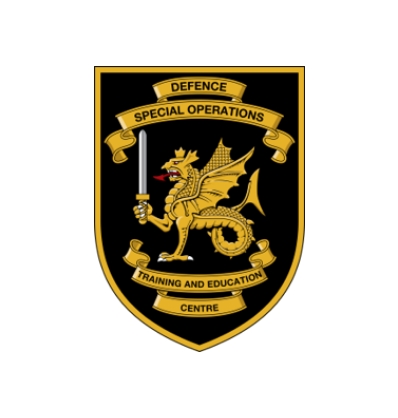
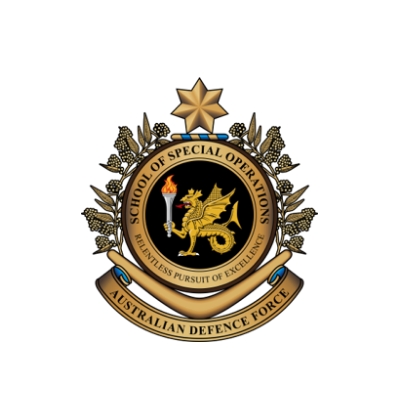
Australian Defence Force School of Special Operations
The Australian Defence Force School of Special Operations is an Australian Army training unit part of the Defence Special Operations Training and Education Centre responsible for the recruitment, selection, training, education and trade management of all Special Operations Command personnel.
It is based at Holsworthy Barracks, New South Wales. The school was established on 19th November 2019 following the renaming of the newly formed Special Operations Training and Education Centre.
Australian Defence Force Parachuting School
The Australian Defence Force Parachuting School (ADFPS) is an Australian Army unit part of the Defence Special Operations Training and Education Centre that provides training in parachuting techniques, develops parachute doctrine and techniques and conducts trial evaluations of parachute systems and associated equipment.
The school is based adjacent to HMAS Albatross, Nowra, New South Wales.
The first military parachute training unit in Australia was the Paratroop Training Unit (PTU), formed at Laverton in Victoria on 3rd November 1942. On 16 November 1942, PTU was relocated to Tocumwal in New South Wales.
PTU was subsequently transferred to RAAF Base Richmond on 6th April 1943 until it was disbanded at the end of WWII in 1945. Parachute Training School (PTS) was formed in 1951 as Parachute Training Wing as a RAAF unit at RAAF Williamtown, New South Wales.
The first course of trainees commenced in September 1951 with instructors from both the Army and the RAAF. The Army assumed responsibility for parachute training on 14th May 1974, with the school being renamed Parachute Training School. The school relocated to Naval Air Station HMAS Albatross in 1986 and remained there to this day.
In 2011 the School became a Special Operations Command unit where Special Forces and support role paratroopers are trained in various forms of airborne capability, evaluation and testing of personnel parachute systems and associated equipment are carried out.
All personnel parachute systems are repacked and repaired organically by the Parachute Maintenance Wing.


Special Operations Logistics Squadron
The Special Operations Logistic Squadron (SOLS) provides close and general logistic support to all units within SOCOMD. SOLS was originally established as the Special Operations Combat Service Support Company in July 2003, as part of the newly created SOCOMD, to provide second and selected third-line support to Australian Special Operations Units.
The unit was renamed the Special Operations Logistic Squadron in 2006.
SOLS is a Squadron sized element of logisticians responsible for providing diverse logistic support to SOCOMD in all theatres of operations around the world. SOLS is the only independent logistic Squadron within SOCOMD and the only independent logistic Squadron within the Australian Army.
Logisticians within SOLS must be able to conduct their role in arduous conditions, remote locations, and in isolated and hostile settings. This requires the members to have a maturity greater than that of a soldier in the wider Army and to have a tolerance of ambiguity not expected within the regular soldier.
SOLS aims to employ volunteers who are selected for their trade competency and their ability to encapsulate a culture that supports exceptional performance. Although a relatively new organisation, SOLS is proud of its short history, built by high-calibre people and is continually striving to provide the most effective and innovative logistic support to its dependent units.
6th Aviation Regiment
The 6th Aviation Regiment is a unit of the 16th Aviation Brigade, raised 1st March 2008. The Regiment provides air mobility and battlefield support to land and Special Forces in a combined, joint or interagency environment in order to defeat attacks against Australia and assist in the defence of Australia’s security interests.
The 6th Aviation Regiment’s headquarters is located at Luscombe Army Airfield, Holsworthy and commands the 171st Aviation Squadron , 173rd Aviation Squadron and a Support Squadron.
The Regiment currently operates Blackhawk and Kiowa Helicopters.

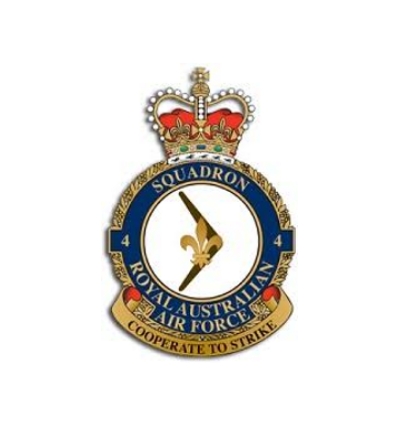
No. 4 Squadron RAAF
The No. 4 Squadron is a Royal Australian Air Force squadron composed of the air force special forces Combat Controllers, aircrew who operate the Pilatus PC-9A(F) (Forward Air Control variant) aircraft and instructors for the Australian Defense Force Joint Terminal Attack Controller course.
The squadron was previously a fighter and army cooperation unit active in both WWI and WWII. Formed in late 1917, the squadron operated on the Western Front as part of the Australian Flying Corps until the armistice in November 1918.
It was disbanded after the war in mid-1919 but re-raised in 1937 and 1940.
In 1942 it was deployed to New Guinea, where it supported military forces by spotting for artillery and providing reconnaissance and close air support. As the war progressed, the squadron took part in the Huon Peninsula, New Britain and Borneo campaigns.
It was disbanded in early 1948 but was re-formed on 2 July 2009 to provide training to forward air controllers and to support Army Special Operations Command.